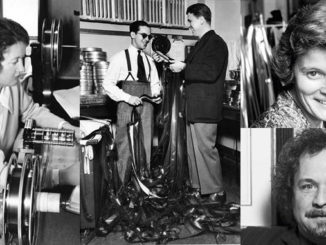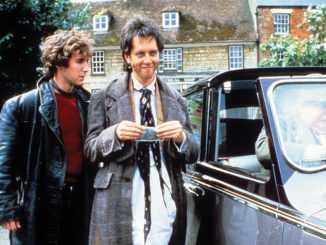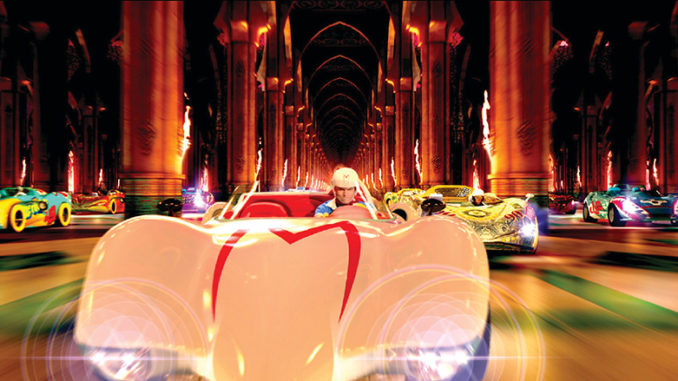
by Debra Kaufman
Visual effects-driven films are standard. Live-action scenes with computer-generated backgrounds, are also nothing new. We’ve become so blasé about the marriage of live action and digital. Is there anything left that hasn’t already been done?
Fasten your seatbelts, because here comes Speed Racer, the new movie by the Wachowski brothers, which takes its initial lap as the closing night film of the Tribeca Film Festival May 3, and then opens nationwide May 9 through Warner Bros.
No strangers to innovation, Larry and Andy Wachowski and their longtime editor Zach Staenberg pioneered the “virtual reality” look of live-action/CG in The Matrix trilogy. But they shift into hyper-drive for this film.––and some of their own feats of derring-do.
“What Speed Racer attempts to do is deal with a re-made reality and there’s a childlike quality to the images and the filmmaking,” says Staenberg who edited the film with Roger Barton (Star Wars: Episode III––Revenge of the Sith). “It’s not childlike in an unsophisticated way, but it takes us back to our adolescence when we first saw Speed Racer and our excitement over the anime style.”
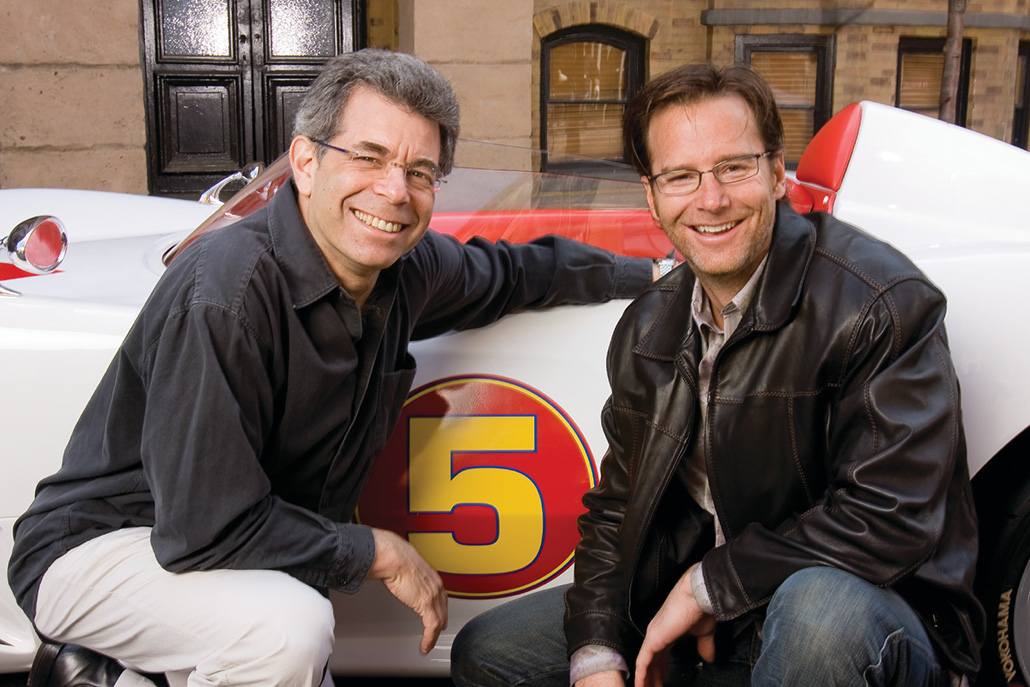
Staenberg points out that the original Speed Racer did not follow normal rules of narrative or visual flow, which in retrospect made the series “pre-punk and post-modern” at the same time. “Whereas The Matrix took steps to make the video game world real, Speed Racer takes it to the next level with perceptual choices that create its own world,” he explains.
From the beginning, the editors knew that the project would be complex. Staenberg, who has edited all of the Wachowskis’ films, had a meeting with them early on and learned that their approach would mean a huge amount of editing. “They were interested in using compositing in a way that it hasn’t been used before,” he says. Specifically, they regarded every element in the shot as a potential focus. Since each element is filmed separately (with a shot in mind), the scene can be recomposed in the editing suite in a myriad number of ways. Either or both characters can be in focus; if everyone is in focus, the Wachowski brothers call it an “infinite focus” shot.
Tweaking is normal in the editing process, but when every element is up for grabs, the number of possible combinations for each shot is immense. “Larry and Andy pointed out that since there would be very few finished shots upon the completion of principal photography, the amount of editing couldn’t be defined––but would be two, three––even five times as much as with a classically shot film,” Staenberg reveals.
The production workflow was designed to integrate the visual effects and art departments, crucial for a movie such as this one.
With that knowledge, bringing on a second editor became a no-brainer. Barton, who had worked with Speed Racer cinematographer David Tattersall on Star Wars: Episode III, was an obvious choice for his expertise with CG imagery. Staenberg focused on the dialogue scenes, although both editors wound up working on every reel in the movie.
“Star Wars turned out to be a great training ground for Speed Racer,” Barton says. “In much the same way, David composed his frames keeping characters’ edges within 2.35:1 and often center-composed to give us latitude to move or stack them in the frame as we designed shots while editing.”
Barton flew to Berlin in pre-production to meet the Wachowskis, and admits to being nervous about being “the new kid on the block.” According to him, the brothers are so loyal to those with whom they work, almost every key player on the film had already worked with them on the Matrix films. “But whatever nerves I had were swept away the moment I sat down with Larry and Andy. Boards and animatics helped to illustrate the look they were going for––a look that depended upon treating each element within the frame as its own object and having the flexibility to manipulate it in a way that often revealed the next object or subject, instead of having to cut.”
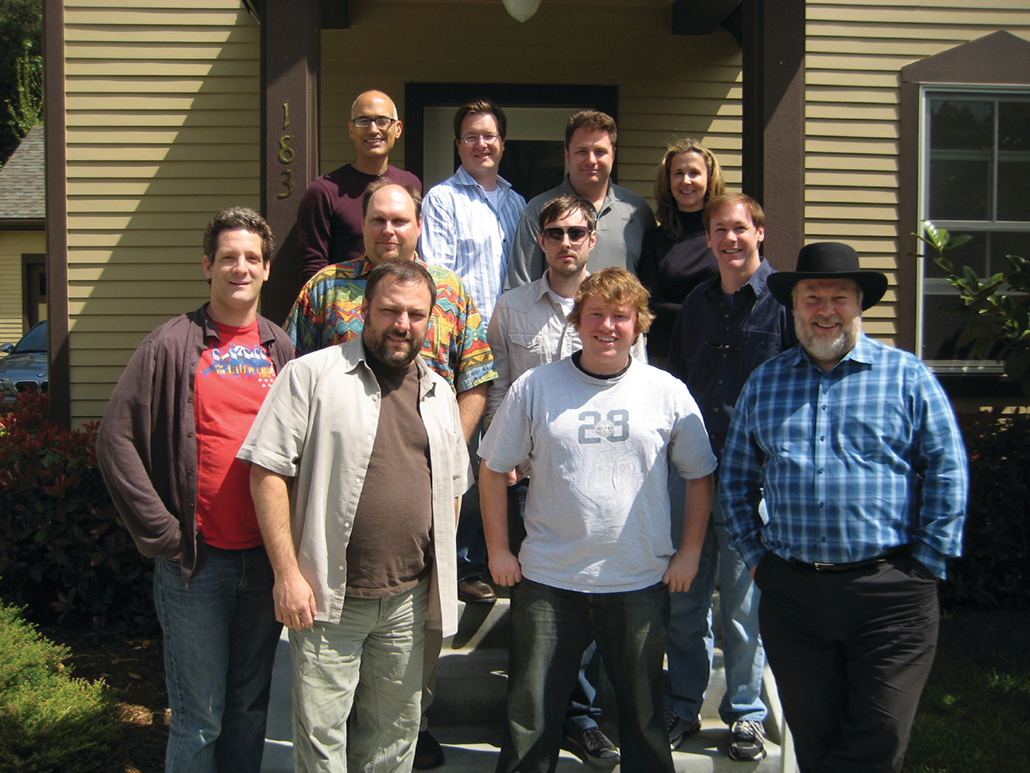
That method of editing makes for some dizzying images. “If you can imagine a car dropping down a hill on a long lens to get speed and excitement and, as it gets to you, it switches to a wide lens,” says Staenberg by way of example. “Anime does that all the time. You don’t have the same kind of continuity and you can have everything in focus. Our brains are trained to see things in a certain way, and what will occur is that something will be vaguely unsettling, something unusual, but in a good way.”
The live-action portion of Speed Racer was shot in high definition with Sony’s F-23 cameras. On location, the editing team had seven Avid Adrenalines running OS X: one each for the editors, two for first assistants Ian Slater and Jett Sally, another for Lars Karich (who was second assistant in Berlin) and two for visual effects editors Gian Ganziano and George McCarthy. When work got hot and heavy in the US (the number of visual effects clocked in at 2,011) the post team added three more Avids: one for additional assistant Catherine Chase and two more for assistant visual effects editors Brett Schlaman and Jeremy Bradley. When Slater left for the opportunity to edit a small movie on his own (with Staenberg’s blessing), he was replaced by Calvin Wimmer. Pivotal Post helped set up in Berlin and continued to assist throughout post-production.
The production workflow was also designed to integrate the visual effects and art departments, crucial for a movie such as this one. “As cameras were rolling, each frame was captured into our Codex Digital on-set recorder,” explains Barton. “We’ve been very lucky to have it on our show because once it has the raw files with embedded metadata, it can spit out Avid MFX files for the cutting room, QuickTime files for low-resolution references, DPX 1K files for temp visual effects compositing, and 2K files for our Filmlight Truelight player that showed dailies each night…with burn-ins if desired, and all from the same machine.”
“In a classically shot film, when you own the shots as they leave the camera, you have four to five months to live with that material and refine it… On a visual effects-driven film the scale of Speed Racer, Larry and Andy were still designing shots that would be in the movie weeks before it was to be finished.” – Zach Staenberg
To view dailies, the Wachowskis would decide what they wanted to see and pipe the 2K DPX files into the Truelight screening room. To add audio files to the high-resolution pictures, the Codex Digital delivered the same files (with the same embedded timecode metadata) to the Avid suite where a sequence of takes with low-resolution pictures and audio were made. The audio track was exported back to the Truelight with the EDL (edit decision list), also created in the Avid. The same LUT (lookup table) was applied to all the material.
The integration of the visual effects and art departments was especially crucial when it came to the backgrounds. Staenberg points out that they were not pre-composited. Both editors cut independent of the background. Visual effects provided some stills or even a single frame comp to flesh out the idea of what the background would look like.
“More than any picture I’ve worked on, the templates we create in editorial use a mixture of live-action plates married with existing animatics,” says Barton. “But as crude and as painful as those early sequences are to look at, it gives us the ledge from which we all jump…or rather talk about how the brothers may want to manipulate the frames, playing with infinite focus or racking focus, or whether to cut out elements of the background plates to exaggerate parallax or give the overall frame a burst of color.”
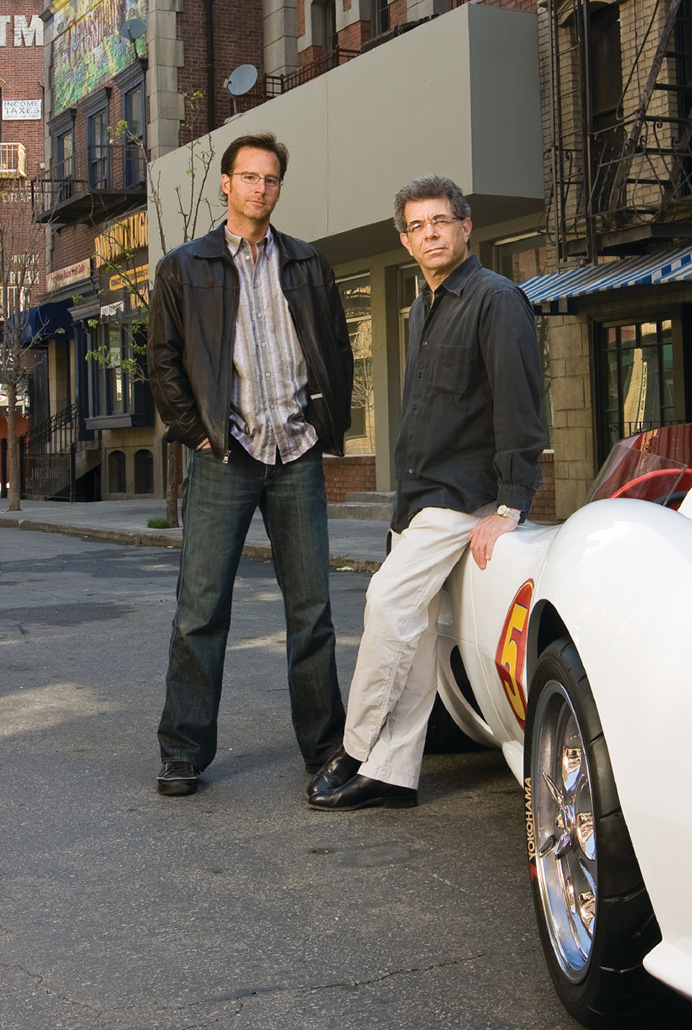
Barton also says that his biggest challenge in editing Speed Racer was keeping up with the visual effects turnover schedule. “With so much gimble footage to watch and then cut for the races, I had to try and stay ahead of what the brothers and I were cutting during the day,” he says. “That meant lots of long nights and weekends, not only for me but for our great assistants on location––Jett, Ian and Catherine––whom I ultimately had to recruit to make my select reels, normally something I reserve for myself since first impressions are so crucial.”
Barton reports that, due to the complexity of the visual effects shots, the team would have meetings in editorial twice a day to discuss new shots cut into the reels, in order to feel how they’re working––both as individual shots and within the overall aesthetic. “Then we all march to the screening room to watch 2K shot submissions from any one of our 15 vendors,” he adds.
Though the raw footage was HD, editing was in standard definition. Early on in the process, says Staenberg, he and Slater went to Avid in Burbank, California, to research possibilities for cutting the material without re-rendering every time they made a change, something that made the Wachowskis unhappy.
“I was very impressed with Adrenaline, especially how we could handle multiple layers of composited video and not have to render it,” Staenberg explains. “We put our horsepower into running multiple layers of unrendered composites rather than putting the horsepower into editing in HD––and it turned out to be a smart move. We couldn’t have done both.”
“As much as I like the idea of cutting in high-def, I don’t think this was the film on which to make the leap,” adds Barton, who points out that they anticipated roughly two million feet of footage.
Adjusting the cut in Speed Racer was never a simple job. “In a classically shot film, when you own the shots as they leave the camera, you have four to five months to live with that material and refine it,” Staenberg adds. “On a visual effects-driven film the scale of Speed Racer, Larry and Andy were still designing shots that would be in the movie weeks before it was to be finished.”
Both editors emphasize the spirit of experimentation that came from the top down and permeated the making of the film. “The brothers urged the art, visual effects and editorial departments to experiment and think outside cinematic conventions,” explains Barton. “John Gaeta, one of our visual effects supervisors, labeled what we do as ‘editography,’ because the style of this film has necessitated blurring the lines between the two crafts [editing and cinematography]. That’s why this movie has been such a blast to make, because we try to leave all the rules we’ve grown up with at the door.”
We’ve become so blasé about the marriage of live action and digital. Is there anything left that hasn’t already been done?
For Staenberg, the most exciting thing about Speed Racer is that once again, the Wachowski brothers are expanding the language of perception. “In this film, they are rejecting the rules of Renaissance perspective, and creating a world of baroque space with potentially different focal distances for each character,” he says. “This, in turn, creates a challenge for both camera and editing––the kind of challenge that is cinema: To redefine perspective, which is what you’re doing with the camera, and to redefine time, which is what editing is. Particularly on a movie like Speed Racer, the editor has to allow the viewer to feel the differences without being thrown out of the movie by them.”
Staenberg notes that the Matrix trilogy produced a quality of time not encountered in movies before. “Sometimes it’s smooth and flowing; sometimes it’s choppy and elliptical with a flow of tempo and color connecting the two,” he says. “Speed Racer continues that and expands it. The racing world is very choppy and made normalized by the flow of tempo and color and carefully detailed action. It’s further normalized by the flow of the dialogue scenes.
“It’s the job of editing to make the audience transition between the parts,” he concludes. “And, in this film, it becomes like music.”



